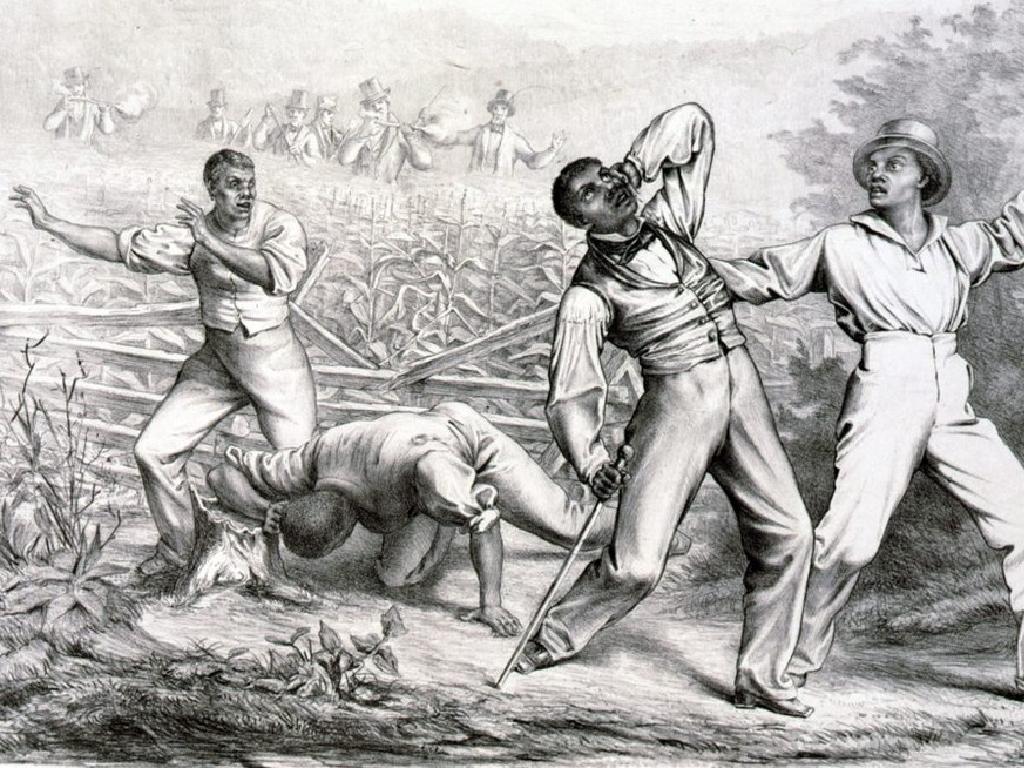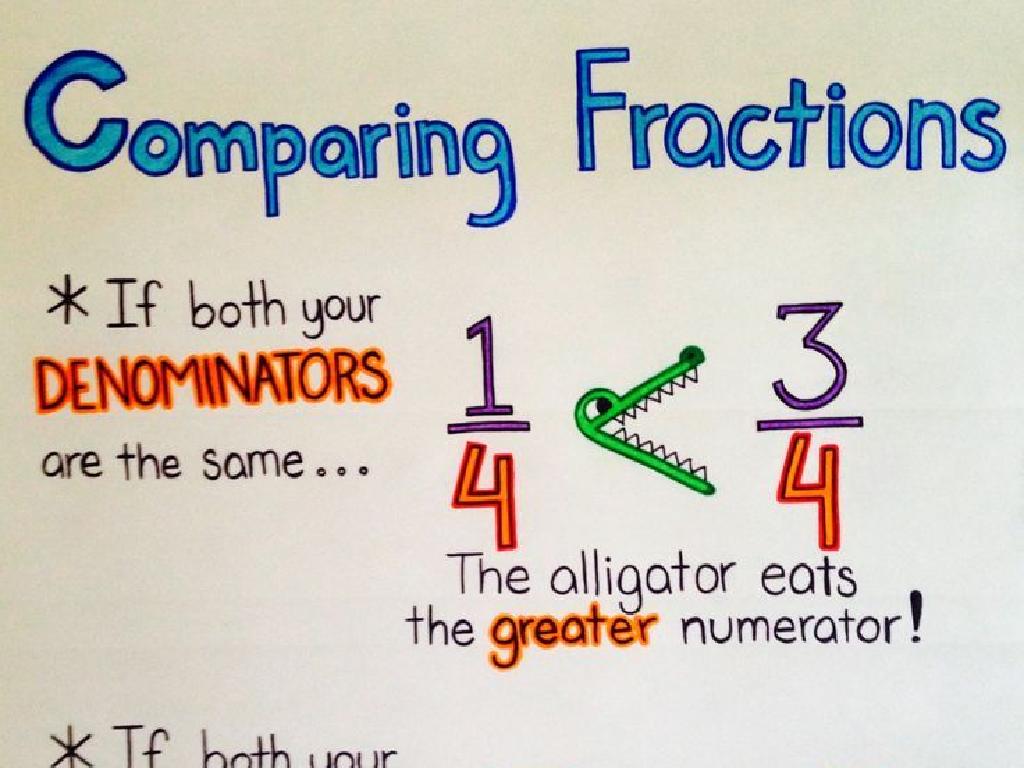Identify Mammals, Birds, Fish, Reptiles, And Amphibians
Subject: Science
Grade: First grade
Topic: Classification
Please LOG IN to download the presentation. Access is available to registered users only.
View More Content
Welcome to Animal Classification!
– Learn about animal types
– Characteristics of mammals
– Mammals have fur or hair and feed milk to babies
– Traits of birds, fish, reptiles, amphibians
– Birds have feathers, fish breathe underwater, reptiles have scales, amphibians live on land and water
– Group animals correctly
|
This slide introduces the concept of animal classification to first graders. Begin by explaining that there are many types of animals in the world, and scientists group them based on their characteristics. Mammals are warm-blooded animals with fur or hair who feed their babies milk. Birds have feathers and lay eggs. Fish live in water and breathe with gills. Reptiles, like snakes and lizards, have dry scales. Amphibians, such as frogs, can live both on land and in water. Use pictures and real-life examples to help students visualize each group. By the end of the lesson, students should be able to observe an animal and determine which group it belongs to based on these characteristics.
Animal Classification
– What is classification?
– Sorting things into groups
– Why classify animals?
– To see how animals are alike or different
– How scientists classify animals?
– To study animals better
|
In this slide, we introduce the concept of classification to first-grade students. Classification is like organizing your toys into different boxes; it helps us sort animals into groups. This is important because it allows us to see how some animals are similar and others are different. For example, a cat and a dog are both mammals because they have fur and give birth to live babies. Scientists classify animals into groups to study and understand them better. By knowing which group an animal belongs to, we can learn a lot about how it lives, what it eats, and how it behaves. Encourage the students to think of animals they know and how they might be grouped together.
Meet the Mammals
– Mammals are warm-blooded
– Mammals have fur or hair
– Live babies and milk feeding
– Unlike eggs, mammals give birth to baby animals
– Examples: Dogs, cats, humans
– Familiar mammals include pets like dogs and cats, and even us, humans!
|
This slide introduces the students to the characteristics that define mammals. Emphasize that being warm-blooded means mammals can maintain their body temperature, unlike cold-blooded animals. Highlight that having fur or hair is a unique feature of mammals. Discuss how mammals differ from other animals in that they give birth to live young rather than laying eggs and that they feed their babies with milk produced by the mother. Use examples that are relatable to first graders, such as common pets and humans themselves, to help them connect with the concept. Encourage the students to think of other examples of mammals and share their thoughts.
Birds of the Sky
– Birds have feathers and wings
– Feathers keep birds warm and help in flight
– Most birds fly, some cannot
– Ostriches and emus are big birds that run fast instead of flying
– Examples: Sparrows and eagles
– Sparrows are small and quick, eagles are large with sharp eyesight
– Penguins: Birds that can’t fly
– Penguins use wings to swim in the ocean
|
This slide introduces students to the characteristics of birds, emphasizing their feathers, wings, and ability to fly. Discuss the variety of birds, from the common sparrow to the majestic eagle, and explain that while most birds fly, some like penguins are adapted to different environments and use their wings for swimming. Use pictures or videos of birds in flight, and compare them with flightless birds to show these differences. Encourage students to observe birds in their surroundings and to think about how their features help them survive in their habitats.
Fascinating Fish: Exploring Aquatic Life
– Fish habitat: Water
– Fish make their homes in oceans, lakes, and rivers.
– Fish body: Scales and gills
– Their bodies are covered in scales and they have gills on the sides.
– Breathing underwater
– Gills help fish take in oxygen from the water.
– Examples of fish
– Like goldfish in bowls, sharks in oceans, and salmon swimming upstream.
|
This slide introduces students to the characteristics of fish, emphasizing their aquatic habitat, body features, and respiratory system. Explain that fish live in various bodies of water and have scales that protect their bodies. Highlight that unlike humans, fish breathe through gills, which extract oxygen from the water. Use familiar examples such as goldfish, which are often kept as pets, sharks, which are large ocean fish, and salmon, known for their unique migration to freshwater to spawn. Encourage students to think of other fish they know and discuss the different environments they live in.
Remarkable Reptiles
– Reptiles’ scaly skin
– Their skin is dry and covered in scales.
– Reptiles lay land eggs
– Unlike fish, reptiles lay their eggs on land.
– Examples of reptiles
– Turtles, snakes, and lizards are all reptiles.
|
This slide introduces students to the characteristics of reptiles, a major group in the animal kingdom. Emphasize that reptiles have unique, dry, scaly skin, which is different from the skin of mammals, birds, or fish. Explain that reptiles lay their eggs on land, which is a key difference from amphibians that lay eggs in water. Provide examples of common reptiles such as turtles, snakes, and lizards to help students identify them. Use pictures or toy models if available to visually demonstrate these creatures. Encourage students to think of other reptiles they know and discuss how these animals are adapted to their environments.
Amazing Amphibians
– Amphibians start in water
– Like a tadpole turning into a frog!
– Live on land when adult
– Skin is moist, no scales
– Frogs, toads, salamanders
– These are common amphibians we might see!
|
This slide introduces students to the fascinating world of amphibians. It’s important to convey that amphibians have a unique life cycle, starting their life in water and often moving to land as they grow, like how a tadpole transforms into a frog. Highlight the fact that unlike fish, amphibians do not have scales but instead have moist skin, which is a key characteristic. Use pictures or toy models of frogs, toads, and salamanders to help students identify these animals. Encourage students to share any experiences they have had with these creatures and ask if they know other examples of amphibians.
Let’s Play a Sorting Game!
– Sort animal pictures together
– Discover what makes animals unique
– Look at fur, feathers, scales, or skin
– Learn about animal groups
– Mammals, birds, fish, reptiles, amphibians
– Get ready for fun and learning!
|
This interactive slide is for a class activity where students will engage in a sorting game to classify animals into their respective groups: mammals, birds, fish, reptiles, and amphibians. The teacher will provide pictures of various animals, and the students will think about the characteristics of each animal, such as the presence of fur, feathers, scales, or skin, to determine its group. The activity is designed to be fun and educational, reinforcing the concept of animal classification based on distinct features. Teachers should prepare diverse animal pictures and possibly realia to make the activity hands-on. They should also be ready to guide the students through the sorting process, providing hints and explanations as needed. The goal is for students to learn the differences and similarities between animal groups in an engaging way.
Class Activity: Animal Group Art!
– Draw your favorite animal
– Label with the animal group
– Is it a mammal, bird, fish, reptile, or amphibian?
– Share your art in class
– Learn about animal classification
– Understand the characteristics that define each group
|
This activity is designed to reinforce the concept of animal classification in a fun and creative way. Provide students with poster boards and drawing materials. Encourage them to think about the characteristics of their favorite animal, such as fur, feathers, or scales, to determine its group. Once they label their drawing, facilitate a discussion about why the animal belongs to that group. Display the posters around the classroom as a visual reminder of the different animal groups. Possible variations of the activity could include group work to create a larger classification chart, a guessing game to match classmates’ drawings to the correct group, or even a mini-presentation by each student to describe their animal and its group.






